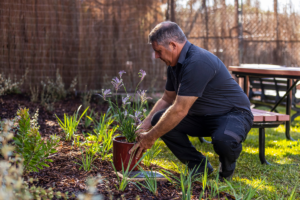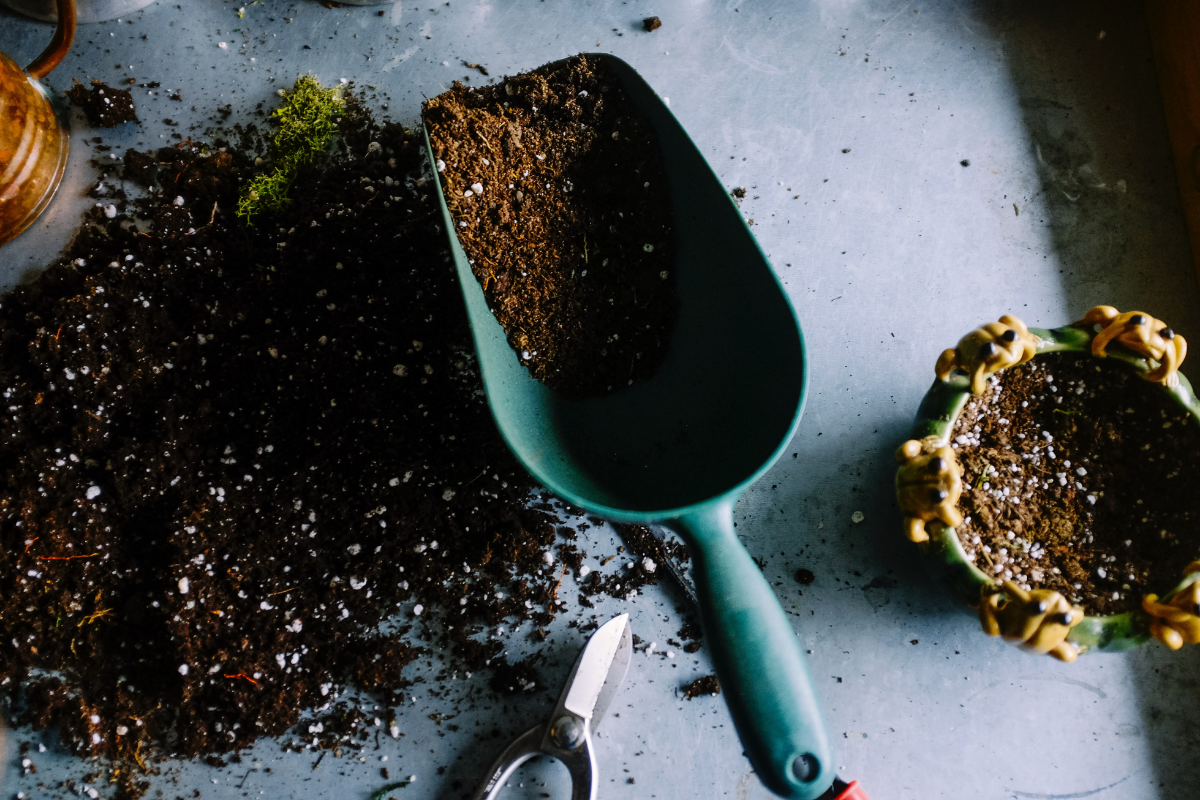Grow your green thumb with these sustainable and eco-friendly gardening tips!
As Australians are looking to make more sustainable choices in their everyday lives, now is the time that we have to look at the environment of our own homes to make changes. And if you’ve made a sustainable switch in your kitchen and your bathroom, now is the time to tackle the backyard!
What makes a sustainable garden?
A sustainable garden is all about using organic growing methods. To achieve a sustainable garden means that we use fewer chemicals and instead adopt more greener alternatives.
But how do we create a sustainable and eco-friendly garden?
Thankfully, we’ve collaborated with Mastercard and Stuart Griffiths from Eco-Green Garden Care – Australia’s first certified carbon-neutral tradesman – to share some easy tips on how to create a sustainable and eco-friendly garden! Switch, sustain and watch your garden sprout in something more sustainable!
1. Plant Edibles
Unsurprisingly, the food industry is one of the biggest contributors to carbon emissions. The cycle of the industry – from the production phase to processing, to storage and then transportation from grower to warehouse, to the wholesaler, to the retailer to and then finally to you – carbon emissions are being produced every step of the way.
By growing our own fruit and vegetables, Australians can reduce the carbon footprint of these foods to a fraction of what they are when we buy them. Further, it will likely be more nutritious, fresher and taste better. Plus, you’ll get the satisfaction from growing it yourself to boot.
2. Plant Native Trees, Plants and Flowers
Planting trees is one of the most effective ways to capture CO2 and help tackle the global climate crisis – and a small way you can help contribute to the planet.
Australia’s native flora is well adapted to the climate and soil conditions of the region in which its planted, reducing demand for water and nutrients. So not only are natives less work, they’re better for water conservation.
Stuart, with the help of Mastercard, has created a ‘Love All’ garden centred around a Eucalyptus Radiata tree alongside a range of flora, all of which is Indigenous to the local region. This ensured suitability to the local conditions as well as a seamless integration into the local ecosystem, supporting local flora and fauna.

7 Easy Tips on How to Create a Sustainable and Eco-friendly Garden. Stuart Griffiths. Image supplied.
3. Landscape to Reduce the Carbon Footprint of your Home
Aside from your garden’s direct relationship to carbon emissions, a well-planned landscape can also help reduce the carbon footprint of your home as well. In addition to the planting of edibles, a well-planned landscape can help reduce emissions and costs, for both heating and cooling your home. Hard surfaces such as concrete can negatively impact natural underground watercourses and damage soil ecosystems. Additionally, they also reflect heat and, as a result, a home with landscaping incorporating a lot of hard surfaces around it will be hotter in summer and will have a larger carbon footprint from cooling requirements. By utilising more soft surfaces, such as organic ground covers and garden beds, your landscaping will reflect less heat and in turn reduce cooling requirements for your home.
Additionally, utilisation of tree planting can also help reduce the impact of heating and cooling on your home’s carbon footprint. By planting deciduous trees on the north side of your home they can shade your home in summer, reducing cooling requirements while allowing the sun through in winter when they’ve dropped their leaves, reducing heating demands in winter.
4. Mulch
Mulching your garden beds can be a simple way to reduce your garden’s carbon footprint. Effective mulching will reduce water demand (water usage does have a carbon footprint), as well as helping suppress weeds, reducing herbicide usage and will help promote beneficial bacteria and fungi in the soil, reducing fertiliser needs.
5. Go Organic
Organic gardening practices are a great way to maintain your garden while caring for the environment. By avoiding the use of chemical products you can ensure you are not leaching harmful chemicals into the ecosystem. The use of practices such as hand weeding reduces use of herbicides, and organic products such as manure reduce use of processed fertilisers.
One of the best organic practices is composting. Composting will not only reduce the need for manufactured fertilisers, it will also reduce carbon emissions from landfill and is great for your soil. When purchased products such as herbicides and fertilisers are required, by choosing organic certified products it can generally be assumed they will have a smaller carbon footprint than the chemical alternatives, due to the reduced degree of processing required in the product manufacturing.
- 7 Easy Tips on How to Create a Sustainable and Eco-friendly Garden. Photographed by Annie Spratt. Image via Unsplash.
6. Use Eco-Friendly Power Tools
Stuart happily uses battery-operated tools charged from renewable energy sources, including solar panels. This ensures that his tools have zero emissions at point of use and during charging. Additionally, these tools provide the added benefit of no fossil fuels being burnt, no fumes and significantly less noise pollution.
For businesses and consumers looking to track their sustainability efforts, Mastercard has developed the Carbon Calculator to provide month-to-month insights into a person’s estimated footprint across a variety of spending categories, helping them better understand their impact on the environment.
7. Responsible Waste Management
Waste products make a massive contribution to carbon emissions every year – both directly, through the emission of carbon gases as they break down, and indirectly through the manufacturing of additional products to replace those that have been disposed of. By careful management of waste materials we can help minimise the impact of waste on the environment.
Composting organic waste is a great place to start. Beyond this, we can reduce waste through simple practices such as looking for products with minimal packaging, or even better, no packaging at all. We can reuse garden products. By choosing products that we can refill rather than having to throw away and replace, by looking for preloved products such as garden furniture, features and materials, or by repurposing features such as rocks, logs or anything else you may already have on your property.
Beyond this, we can also support recycling, not just by ensuring any of our recyclables go into the recycling, but by seeking out products that are manufactured from recycled materials. Some examples may be recycled bricks or pavers, or furniture manufactured from recycled materials.
With a shared vision to preserve the planet, Mastercard seeks to enable every person on the planet to support positive environmental impact through products and initiatives such the Priceless Planet Coalition.
Want something that’s easy to care for? Check out our list of the 10 Best and Easiest Indoor Plants to Grow. Step into sustainability with these 10 Best Must-Read Books for Sustainable Living.



